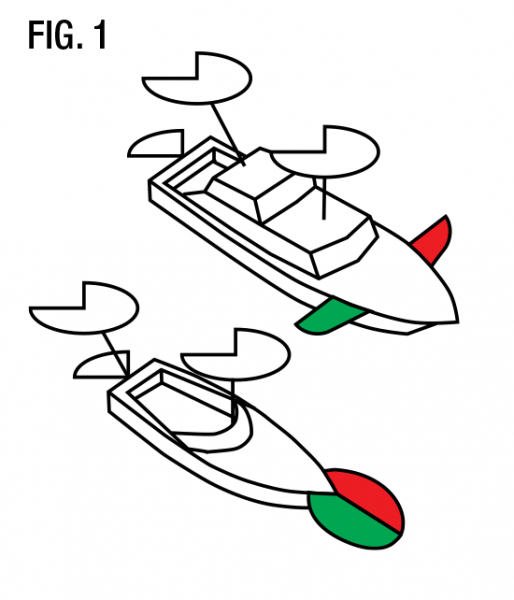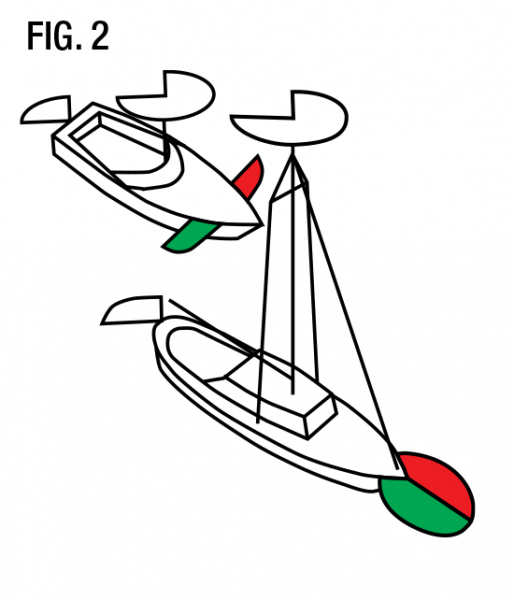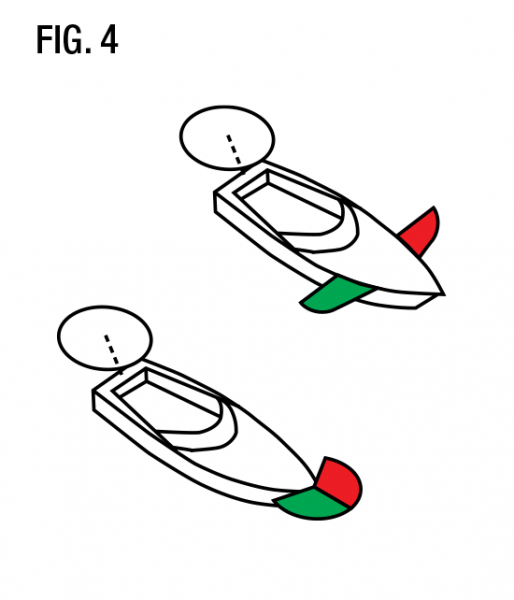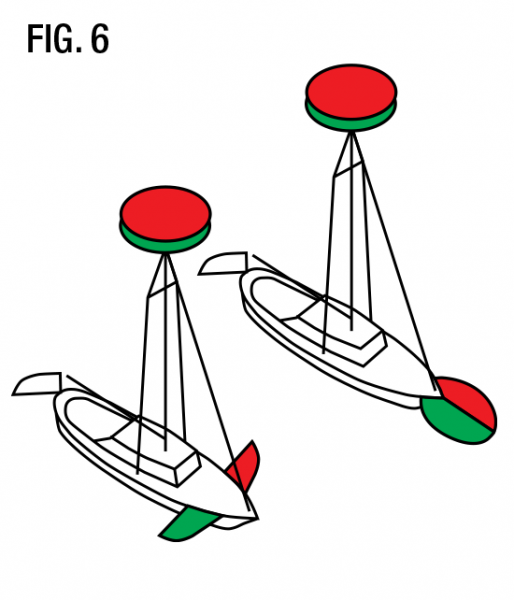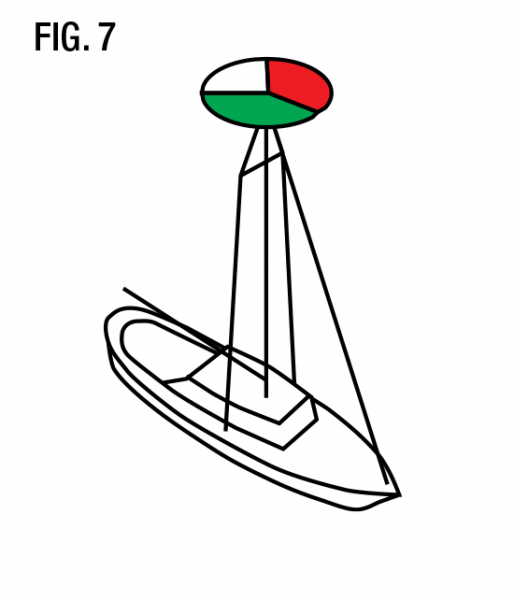- Summary of Virginia Boating Equipment Requirements
- Life Jackets
- Fire Extinguishers
- Backfire Flame Arrestor
- Ventilation
- Sound-Producing Devices
- Muffling Device
- Engine Cut-Off Switch (ECOS)
- Marine Sanitation Devices (MSD)
- Visual Distress Signals
- Navigation Lights
Summary of Virginia Boating Equipment Requirements
| Manually-Propelled Vessels (Canoes, Kayaks, SUPs, etc.) | PWCs | Boats Under 16 Feet | Boat 16 feet – less than 26 feet | Boats 26 feet – less than 40 feet | Boats 40 feet – 60 feet | |
|---|---|---|---|---|---|---|
| Life Jackets – Wearable | Required | Required1 | Required | Required | Required | Required |
| Life Jackets – Throwable | Required | Required | Required | |||
| Certificate of Number | Required | Required2 | Required2 | Required | Required | |
| Validation | Required | Required2 | Required2 | Required | Required | |
| Type 5-B Fire Extinguisher | Required | Required3 | Required3 | |||
| Type 20-B Fire Extinguisher | Required4 | Required5 | ||||
| Engine Cut-Off Switch (ECOS) | Required | Required9 | Required9 | |||
| Backfire Flame Arrestor | Required | Required | Required | Required | Required | |
| Ventilation System | Required | Required | Required | Required | Required | |
| Muffler (inboard engines) | Required | Required | Required | Required | Required | |
| Horn, Whistle, or Bell | Required8 | Required | Required | Required | Required | Required |
| Daytime VDS – Operating in Coastal Waters | Required | Required | Required | |||
| Nighttime VDS – Operating in Coastal Waters | Required | Required | Required | Required | Required | |
| Navigation Lights | Required6 | Required6 | Required6 | Required6 | Required6 | |
| Boating Safety Education Certificate | Required | Required7 | Required7 | Required7 | Required7 |
- The operator, each rider, and anyone being towed behind a PWC must be wearing a USCG-approved wearable life jacket suitable for that activity. Inflatable life jackets are prohibited.
- Except non-motorized vessels.
- Applies to boats where one of the following conditions exists: permanently installed fuel tanks; closed compartments under thwarts and seats where portable fuel tanks are stored; double bottoms not sealed at the hull or which are not completely filled with flotation material; closed living spaces; or closed stowage compartment in which combustible or flammable materials may be stowed.
- Must carry one 20-B or two 5-b. A fixed system equals one 5-B.
- Must carry one 20-B and one 5-B or three 5-B. A fixed system equals one 5-B.
- See “Navigation Lights”.
- Applies to all PWCs and all motorboats with engine of 10 hp or greater.
- A sufficient means of making a sound signal (4–6 seconds) in duration and audible for ½ a nautical mile.
- Federal law requires use above displacement speed on boats equipped with a functioning engine cutoff device or boats manufactured after January 2020. See “Engine Cut-Off Switch (ECOS)”
Did You Know?
Stand Up Paddleboards (SUPs) are considered a vessel when outside a designated swim zone or beyond the surf zone. Life jackets and a sound-producing device (whistle) are required!
Life Jackets
Every year many boating-related fatalities result in drownings because the individuals were not wearing life jackets. To ensure you and your passengers have a fun and safe day on the water, here are the basic life jacket rules you need to follow.
- There must be one wearable U.S. Coast Guard approved life jacket for each person on the boat. This includes all boats including paddlecraft (canoes, kayaks, and stand up paddleboards).
- Each life jacket needs to be in good and serviceable condition.
- Each life jacket should be of the proper fit for each passenger on board. See Fitting Your Life Jacket.
- Life jackets need to be worn according to the manufacturer’s label in order to meet safety requirements.
- Each required wearable life jacket needs to be readily accessible if not worn. Readily accessible means the life jackets are out in the open or where they can be reached easily and quickly. Life jackets may not be in protective coverings or under lock and key.
- Boats 16 feet or greater must also have a throwable device. This does not apply to personal watercraft (PWCs).
- Throwable devices must be immediately available. Immediately available means that the throwable device shall be quickly reachable in an emergency situation and cannot be in a protective covering in a closed compartment or under equipment.
All required life jackets and throwable devices must be in good and serviceable condition. This means that all buckles and straps must be in good condition and not ripped or torn; seams and material must be intact; no rips or tears in the fabric or coating; buoyant material is intact and has not hardened, become water-logged, soiled or become oil-soaked.
Inflatable Life Jackets
Inflatable life jackets are lightweight, comfortable to wear and take up about one-tenth of the storage room of conventional foam-filled life jackets. Inflatable life jackets are only approved for persons age 16 or older. Be sure to check the label for usage limitations such as whitewater activities, water skiing, or riding on a PWC.
Inflatable life jackets must meet all the requirements for wearable life jackets listed above plus the following:
- A properly armed with an inflation mechanism complete with a full inflation cartridge and status indicator that shows the mechanism is properly armed;
- Inflatable chambers that are capable of holding air;
- Oral inflation tubes that are not be blocked, detached, or broken;
- Inflation status indicators that are not broken or otherwise non-functional.
Federal Life Jacket Rule for Children Under 13 Years Old
No person may operate a recreation vessel on federal waters with any child under age 13 on the vessel unless each child is either:
- Wearing an appropriate U.S. Coast Guard-approved life jacket; or below deck or in an enclosed cabin.
- This federal law is enforced by the U.S. Coast Guard. Most waters in Virginia are considered federal waters.
Fitting Your Life Jacket
Life Jackets come in a variety of sizes and size ranges. The life jacket label will provide the size of the life jacket along with information about the life jacket approval and approved uses of the life jacket (some life jackets are not approved for use on PWCs, towed watersports, or white water activities).
After you check the label, be sure to try it on! Before every boating trip, try on your life jacket to make sure it fits correctly.
What does a correct fit mean?
- It should be snug, but not tight.
- Lift your arms over your head — can you turn your head left, right, and over your shoulder, or does the life jacket ride up and in the way of moving your head?
- For children, have them stand with their arms at their sides. Lift the jacket up by the shoulders. The life jackets should not move more than 3 inches, no higher than the child’s ears. If the life jacket does move up more than 3 inches, it is too big and the child can slip out of their life jacket. A life jacket for a young child will include a crotch strap. The crotch strap will ensure the life jacket stays on.
- A final test of the life jacket is to try it on in the water. The life jacket should be snug enough to not ride up over the chin or ears when in the water.
Fire Extinguishers
All boats over 26 feet must have USCG approved, adequately charged fire extinguishers aboard (see the chart for specific safety requirements). In addition, all motorboats under 26 feet that have one or more of the following conditions must also carry fire extinguishers:
- Permanently installed fuel tanks.
- Closed compartment under thwarts and seats wherein portable fuel tanks may be stored.
- Double bottoms not sealed to the hull or which are not completely filled with flotation material.
- Closed living spaces.
- Closed stowage compartment in which combustible or flammable materials may be stowed.
All fire extinguishers must be U.S. Coast Guard approved, must have an efficient charge, must be in good and serviceable condition, and must not be expired (fire extinguishers expire 12 years after date of manufacture).
Minimum Number of 5-B Hand-Portable Fire Extinguishers Required1
| Length (Feet) | No Fixed Fire Extinguishing System in Engine Space | Fixed Fire Extinguishing System in Engine Space |
|---|---|---|
| Under 16 | 1 | 0 |
| 16 to less than 26 | 1 | 0 |
| 26 to less than 40 | 2 | 1 |
| 40 to 65 | 3 | 2 |
- One 20-B fire extinguisher may be substituted for two 5-B fire extinguishers.
Backfire Flame Arrestor
All powerboats, except outboards, that are fueled with gasoline must have a USCG approved backfire flame arrestor on each carburetor.
Ventilation
Any boat using a fuel with a flashpoint of 110° or less (gasoline but not diesel) that has any enclosed engine or fuel tank spaces (not open to the atmosphere) , must have an efficient ventilation system to disperse explosive gases. Natural ventilation consists of at least two ventilation ducts fitted with cowls or their equivalent. At least one exhaust duct extending to the lower portion of the bilge and at least one intake (supply) duct extending to a point midway to the bilge or at least below the level of the carburetor air intake is required. Boats built after July 31, 1980 are required to have powered ventilation (exhaust blower) for engine compartments that are not open to the atmosphere.
WARNING: Gasoline vapors can explode. Before starting the engine, operate blower for at least four minutes and check engine compartment bilge for gasoline vapors.
All owners are responsible for keeping their boat’s ventilation systems in operating condition. This means, making sure openings are free of obstructions, ducts are not blocked or torn, blowers are operating properly, and worn out components are replaced with equivalent marine type equipment.
Sound-Producing Devices
All vessels, including paddlecraft, must carry a sound-producing device. The navigation rules require sound signals to be made under certain circumstances. Meeting, crossing, and overtaking situations described in Navigation Rules are examples of when sound signals are required. Recreational vessels are also required to sound fog signals during periods of reduced visibility. Having some means of making an efficient sound signal capable of a 4-second blast audible for 1/2 a nautical mile is required. A whistle or air horn is acceptable if your vessel is not equipped with a horn.
Muffling Device
The exhaust of an internal combustion engine on any motorboat shall be effectively muffled. The muffling device shall exhaust at or below the water line or it shall be equipped with mechanical baffles. The use of cutouts is prohibited.
Engine Cutoff Switch (ECOS)
Every year people are injured and killed in boating incidents that could have been prevented by the use of a simple engine cutoff switch. A federal law requires that vessel operators of boats less than 26 feet use (attach to person) the engine cutoff switch when traveling on plane or above displacement speed. This applies to boats equipped with a functioning engine cutoff device or boats manufactured after January 2020. In addition, state law requires that all operators of personal watercraft attach the engine cutoff switch to their person. For more information about the new federal law, go to this link.
Marine Sanitation Devices (MSD)
Vessels with installed toilets and marine sanitation devices shall be in compliance with federal regulations which set standards for sewage discharges from marine sanitation devices. Vessels without installed toilets or without installed marine sanitation devices shall not directly or indirectly discharge sewage into state waters. Sewage and other wastes from self-contained, portable toilets or other containment devices shall be pumped out a pump-out facilities or carried ashore for treatment in facilities approved by the Virginia
Department of Health. Smith Mountain Lake is a “No Discharge Zone.”
Pump-Out Stations
A complete list of pump-out stations is available by contacting the Virginia Department of Health (VDH) at 804-864-7473 or online at the VDH website.
Visual Distress Signals
All power boats 16 feet or greater in length shall be equipped with visual distress signaling devices at all times when operating on coastal waters. This regulation applies to all coastal waters and those rivers 2 miles or more wide at the mouth and up to the first point the river narrows to less than 2 miles.
Boats less than 16 feet, manually propelled boats (rowboats, canoes, kayaks, etc.), and open sailboats under 26 feet with no motor, are required to carry only night visual distress signals when operated on coastal waters at night.
Recreational boaters may carry additional visual distress signals over the minimum number of VDS required.
Note: It is illegal to display a visual distress signal unless immediate assistance is needed.
If using pyrotechnic signals, must have 3 night signals plus 3 day signals or 3 day/night combination signals. If using non-pyrotechnic signals, you must have 1 day signal and 1 night signal.
Pyrotechnic visual distress signals must be:
- USCG approved
- in serviceable condition
- readily accessible
- not expired
- Launchers produced before January 1, 1981, intended for use with approved signals are not required to be USCG approved.
USCG approved Pyrotechnic Visual Distress Signals include:
- Pyrotechnic red flares, hand-held or aerial;
- Pyrotechnic orange smoke, handheld or floating;
- Launchers for aerial red meteors or parachute flares.
Non-pyrotechnic visual distress signaling devices must:
- Meet USCG requirements.
- Be in serviceable condition.
- Be readily accessible.
USCG approved non-pyrotechnic visual distress signals include:
- Orange distress flag with black square and black ball, for daytime use;
- Electric distress light for night use.
The following points will be used as the “cutoff points” for enforcement of the visual distress signal regulations on the coastal waters in Virginia. These points can be found on the appropriate nautical chart.
- Entrance to Hampton Roads up to where the waterway is reduced to 2 nautical miles which is a line drawn between Old Point Comfort and Fort Wool.
- York River up to where the waterway is reduced to 2 nautical miles which is a line drawn between Sandy Point and Tue Point, which is in the vicinity of Tue Marshes Light.
- Mobjack Bay up to, but not including, the Severn, Ware, North and East rivers.
- Entrance to the Piankatank River where the waterway is reduced to 2 nautical miles which is a line drawn from Cherry Point at Gwynns Island across the river to the opposite shore, which is in the vicinity of Piankatank River Lighted Buoy 6.
- Rappahannock River up to where the waterway is reduced to 2 nautical miles, which is a line drawn from Parrott Island to Cherry Point, which is just before you get to the first highway bridge.
- Those parts of the Pocomoke and Tangier Sounds which fall within Virginia.
- Where the uncharted inlets of the Atlantic Ocean are reduced to 2 nautical miles in width.
Navigation Lights
Power Driven Vessels
Sailing Vessels
Recreational boats, while underway, are required to display navigation lights between sunset and sunrise and during periods of restricted visibility.
No other lights shall be exhibited that could impair the visibility of required running lights or impair the visibility of approaching vessels.
Lights Used When Anchored
An anchor light is a 360 degree (all-round) white light exhibited where it can best be seen and visible for 2 miles.
Special Lights for Enforcement Vessels
Enforcement vessels of the DWR, the USCG, and other law enforcement agencies may display a rotating or flashing blue light. When such a light is observed you should stop immediately and maneuver in such a way as to permit the boarding officer to come alongside or aboard. By federal law, blue lights may only be displayed by enforcement vessels of the federal, state or local governments, and have the same effect on the water as the rotating or flashing blue lights on law enforcement cars traveling our highways.
Vessels Less Than 12 Meters (39.4 ft.) in Length
- Vessels or sailboats using power: the lighting arrangement in Figure 1, 2, 3, or 4 may be used.
- Sailboats using sail alone: the lighting arrangement in figure 5, 6, or 7 may be used.
- The white masthead light or all around white light must be at least 1 meter (3.3 ft.) higher than the colored sidelights.
Vessels 12 Meters but Less Than 20 Meters (65.5 ft.) in Length
- Vessels or sailboats using power: the lighting arrangement in Figure 1 or 2 may be used. The lighting arrangement in Figure 3 may be used if the vessel was constructed before December 24, 1980.
- Sailboats using sail alone: the lighting arrangement in Figure 5, 6, or 7 may be used.
- The white masthead light or all around white light must be at least 1 meter (3.3 ft.) higher than the colored sidelights.
Unpowered Vessels
A vessel under oars and sailboats less than 7 meters (23 feet) in length may display those lights prescribed for a sailing vessel, but if they do not, they shall have ready at hand an electric torch or lighted lantern (Figure 8) shining a white light which shall be exhibited in sufficient time to prevent collision.
International Rules (Past the Line of Demarcation)
Beyond three nautical miles of Virginia’s coastline, if your power-driven vessel is less than 23 feet (7 meters) in length and its maximum speed does not exceed 7 knots, then it may display an all-round white light, and if possible, sidelights instead of the lights previously described.


